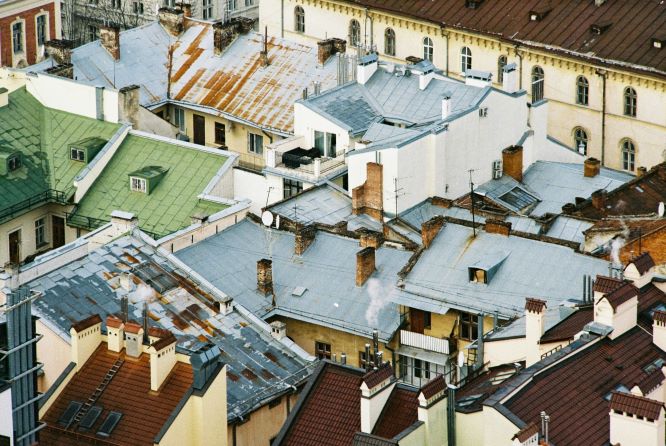Why should homeowners in San Jose care about roofing venting?
Proper roofing venting is the unsung hero of a healthy, efficient home. It ensures your roof and attic are protected from heat buildup, moisture damage, and skyrocketing energy costs. San Jose’s unique climate—with its hot, dry summers and mild, moist winters—places special demands on homes, making roofing venting San Jose an essential topic for every homeowner.
In this comprehensive guide, we’ll explore everything you need to know about roofing venting, from how it works to the types of vents best suited for San Jose homes. Whether you’re upgrading your roof, addressing ventilation issues, or simply curious about energy efficiency, this guide has you covered.
Why Roofing Venting Matters in San Jose
San Jose’s Mediterranean climate poses unique challenges for homeowners. The hot summers can cause attics to reach unbearable temperatures, while the mild winters can lead to condensation and moisture issues. Without proper ventilation, these conditions create the perfect storm for:
- Excessive heat buildup: This can damage roofing materials, increase cooling costs, and shorten the lifespan of your roof.
- Moisture and mold: Poor ventilation traps moisture, creating the ideal conditions for mold growth, wood rot, and insulation damage.
- Higher energy bills: Without airflow to regulate temperatures, your HVAC system works harder, consuming more energy.
- Premature roof aging: Over time, trapped heat and moisture can cause shingles to warp, crack, or deteriorate.
San Jose homeowners must also consider local building codes, which require specific ventilation systems to meet fire safety and energy efficiency standards. Proper roofing venting San Jose ensures compliance while protecting your home from costly repairs.
How Roof Ventilation Works
At its core, roof ventilation is about creating a balanced system of airflow that regulates attic temperature and moisture levels.
- Intake vents: Located near the bottom of the roof (e.g., soffits), these vents pull in cool air from outside.
- Exhaust vents: Positioned at the roof’s peak (e.g., ridge vents), these allow hot, moist air to escape.
Together, these components create a continuous flow of air, preventing heat and moisture from becoming trapped. Insulation also plays a crucial role, ensuring your home stays comfortable while maximizing the efficiency of your ventilation system.
Types of Roof Vents Used in San Jose
When it comes to roofing venting San Jose, there’s no one-size-fits-all solution. The best venting system for your home depends on factors like roof design, attic space, and local regulations. Let’s explore the most common options:
- Ridge vents
- Installed along the roof’s peak for seamless airflow.
- Highly effective and aesthetically pleasing.
- Ideal for most San Jose homes due to their efficiency and low maintenance.
- Soffit vents
- Located under the eaves to draw in cool air.
- Essential for maintaining the intake-exhaust balance.
- Gable vents
- Installed on vertical walls at the roof’s gable ends.
- Useful for supplementary airflow but less effective on their own.
- Powered attic fans
- Electric or solar-powered fans boost airflow, especially for homes with high heat exposure.
- Great for larger attics or older homes with limited ventilation.
- Static box vents (or turtle vents)
- Small, box-shaped vents that provide passive ventilation.
- Affordable but less efficient than ridge vents.
- Wind turbines
- Use wind power to spin and create airflow.
- Eco-friendly and effective in windy areas.
- Fire-safe vents
- Designed to block embers and flames during wildfires.
- Critical for homes in wildfire-prone areas of San Jose.
| Vent Type | Best Uses | Estimated Cost |
|---|---|---|
| Ridge Vents | Most homes, efficient airflow | $400–$800 installed |
| Soffit Vents | Intake air for balanced systems | $200–$500 installed |
| Powered Attic Fans | Homes with high heat exposure | $300–$1,200 installed |
| Fire-Safe Vents | Wildfire-prone areas | $600–$1,500 installed |
Choosing the Right Venting System for Your Home
Selecting the right system for roofing venting San Jose requires careful consideration of your home’s unique needs.
- Roof design: The pitch, size, and material of your roof influence the type of vents you’ll need.
- Climate considerations: San Jose’s hot summers and wildfire risks make fire-safe and energy-efficient options a priority.
- Energy savings: Proper venting reduces strain on HVAC systems, lowering energy bills.
A professional roofing assessment is often the best way to determine your ideal venting solution. For example, one San Jose homeowner saw a 30% reduction in cooling costs after upgrading to ridge vents and adding solar-powered attic fans.
Benefits of Proper Roofing Venting
The advantages of a well-ventilated roof go beyond comfort and cost savings:
- Lower energy bills: Ventilation prevents heat buildup, reducing the need for air conditioning.
- Extended roof lifespan: By preventing heat and moisture damage, venting protects shingles and other materials.
- Mold prevention: Adequate airflow keeps moisture levels in check, safeguarding indoor air quality.
- Year-round comfort: Venting regulates temperatures, keeping your home cool in summer and dry in winter.
- Fire safety: Fire-safe vents protect your home from embers during wildfire season.
Common Roofing Venting Problems and Solutions in San Jose
Even the best venting systems can experience issues. Common problems include:
- Blocked vents: Debris, dirt, or insulation can obstruct airflow.
- Leaks: Poorly installed or damaged vents allow water to seep in.
- Animal entry: Birds, squirrels, and other pests can nest in vents.
- Improper placement: Incorrectly installed vents fail to provide adequate airflow.
Regular maintenance and professional inspections can help identify and resolve these issues before they lead to bigger problems.
Roofing Venting Installation: Costs, Process & Local Regulations
Hiring a professional for roofing venting San Jose ensures a safe, efficient installation. Here’s what to expect:
- Assessment: A roofer evaluates your attic, roof pitch, and current venting system.
- Planning: They’ll recommend the best venting solution and provide a cost estimate.
- Installation: This involves cutting openings, securing vents, and sealing them to prevent leaks.
- Compliance: Professionals ensure your system meets local codes and fire safety standards.
Cost Breakdown:
- Ridge vent installation: $400–$800
- Soffit vent installation: $200–$500
- Solar attic fan: $600–$1,200
Maintaining Your Roofing Venting System
To keep your venting system in top condition, follow this seasonal maintenance checklist:
- Spring: Check for debris and clean soffit vents.
- Summer: Inspect for signs of heat damage or pests.
- Fall: Clear leaves and dirt from intake and exhaust vents.
- Winter: Look for signs of condensation or ice dams.
Schedule professional inspections every 1–2 years to address potential issues before they escalate.
FAQs About Roofing Venting in San Jose
1. How do I know if my home needs more roof vents?
Look for signs like a hot attic, musty smells, or excessive energy bills.
2. Are solar attic fans worth it in San Jose?
Yes! Solar fans are ideal for reducing heat buildup in sunny climates like San Jose.
3. Can roof venting lower my insurance?
Some insurers offer discounts for fire-safe venting systems.
4. What venting system is best for my roof type?
It depends on your roof’s design and attic size. Ridge vents are a popular choice for most homes.
5. DIY vs. professional venting installation?
While some tasks can be DIY-friendly, professional installation ensures compliance with codes and optimal performance.
Conclusion
Roofing venting is more than a home improvement project—it’s a necessity for San Jose homeowners. Proper roofing venting San Jose protects your home from heat, moisture, and costly repairs while improving comfort and energy efficiency.
Don’t wait until problems arise. Schedule a roofing vent inspection today and take the first step toward a healthier, safer home. Contact us now for a free assessment or quote!



